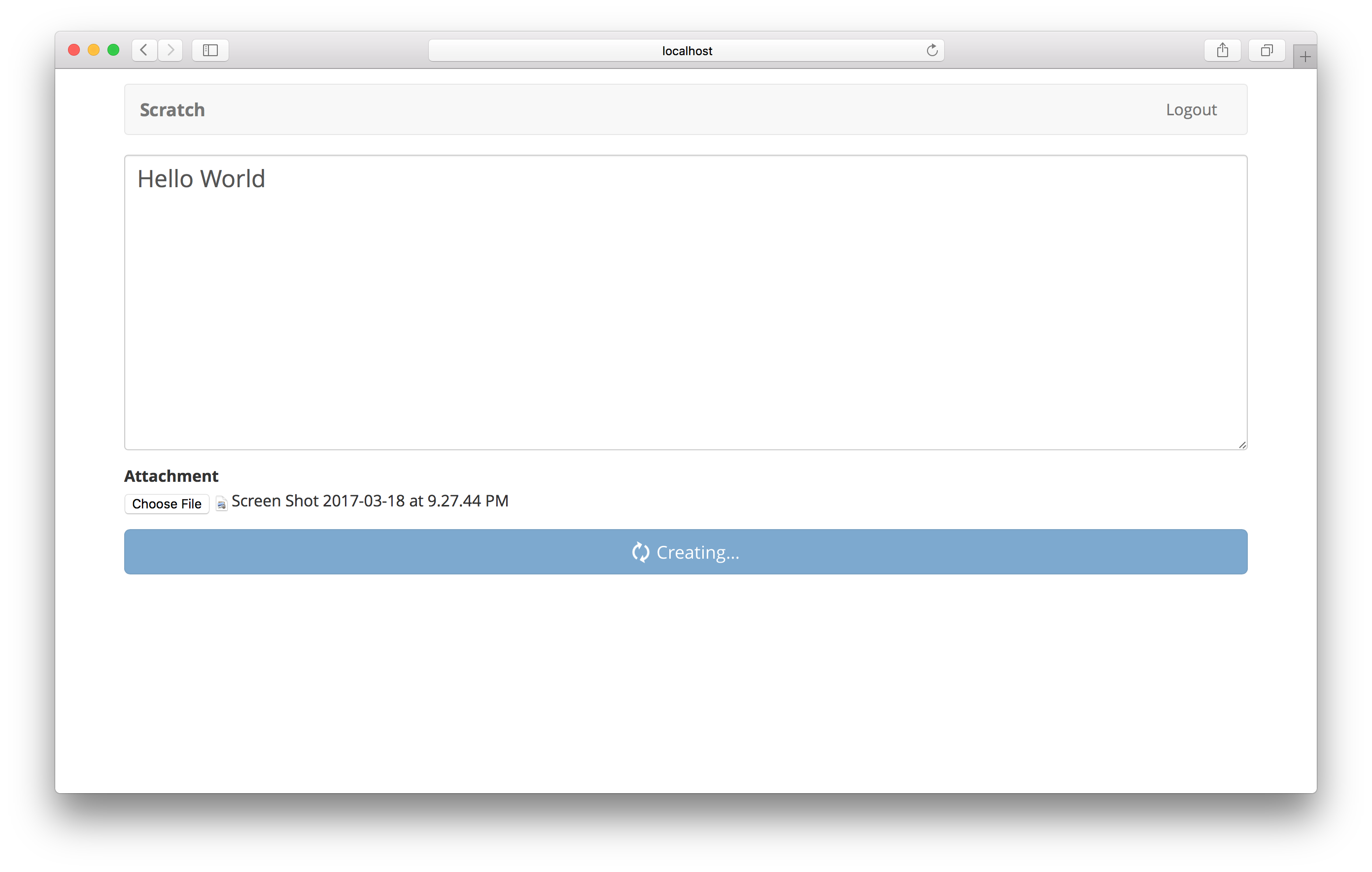Add the Create Note Page
Now that we can signup users and also log them in. Let’s get started with the most important part of our note taking app; the creation of a note.
First we are going to create the form for a note. It’ll take some content and a file as an attachment.
Add the Container
 Create a new file
Create a new file src/containers/NewNote.js and add the following.
import React, { Component } from 'react';
import { withRouter } from 'react-router-dom';
import {
FormGroup,
FormControl,
ControlLabel,
} from 'react-bootstrap';
import LoaderButton from '../components/LoaderButton';
import config from '../config.js';
import './NewNote.css';
class NewNote extends Component {
constructor(props) {
super(props);
this.file = null;
this.state = {
isLoading: null,
content: '',
};
}
validateForm() {
return this.state.content.length > 0;
}
handleChange = (event) => {
this.setState({
[event.target.id]: event.target.value
});
}
handleFileChange = (event) => {
this.file = event.target.files[0];
}
handleSubmit = async (event) => {
event.preventDefault();
if (this.file && this.file.size > config.MAX_ATTACHMENT_SIZE) {
alert('Please pick a file smaller than 5MB');
return;
}
this.setState({ isLoading: true });
}
render() {
return (
<div className="NewNote">
<form onSubmit={this.handleSubmit}>
<FormGroup controlId="content">
<FormControl
onChange={this.handleChange}
value={this.state.content}
componentClass="textarea" />
</FormGroup>
<FormGroup controlId="file">
<ControlLabel>Attachment</ControlLabel>
<FormControl
onChange={this.handleFileChange}
type="file" />
</FormGroup>
<LoaderButton
block
bsStyle="primary"
bsSize="large"
disabled={ ! this.validateForm() }
type="submit"
isLoading={this.state.isLoading}
text="Create"
loadingText="Creating…" />
</form>
</div>
);
}
}
export default withRouter(NewNote);
Everything is fairly standard here, except for the file input. Our form elements so far have been controlled components, as in their value is directly controlled by the state of the component. The file input simply calls a different onChange handler (handleFileChange) that saves the file object as a class property. We use a class property instead of saving it in the state because the file object we save does not change or drive the rendering of our component.
Currently, our handleSubmit does not do a whole lot other than limiting the file size of our attachment. We are going to define this in our config.
 So add the following to our
So add the following to our src/config.js below the export default { line.
MAX_ATTACHMENT_SIZE: 5000000,
 Let’s also add the styles for our form in
Let’s also add the styles for our form in src/containers/NewNote.css.
.NewNote form {
padding-bottom: 15px;
}
.NewNote form textarea {
height: 300px;
font-size: 24px;
}
Add the Route
 Finally, add our container as a route in
Finally, add our container as a route in src/Routes.js below our signup route. We are using the AppliedRoute component that we created in the Add the user token to the state chapter.
<AppliedRoute path="/notes/new" exact component={NewNote} props={childProps} />
 And include our component in the header.
And include our component in the header.
import NewNote from './containers/NewNote';
Now if we switch to our browser and navigate http://localhost:3000/notes/new we should see our newly created form. Try adding some content, uploading a file, and hitting submit to see it in action.

Next, let’s get into connecting this form to our API.
If you liked this post, please subscribe to our newsletter and give us a star on GitHub.
For help and discussion
Comments on this chapterFor reference, here is the code so far
Frontend Source :add-the-create-note-page